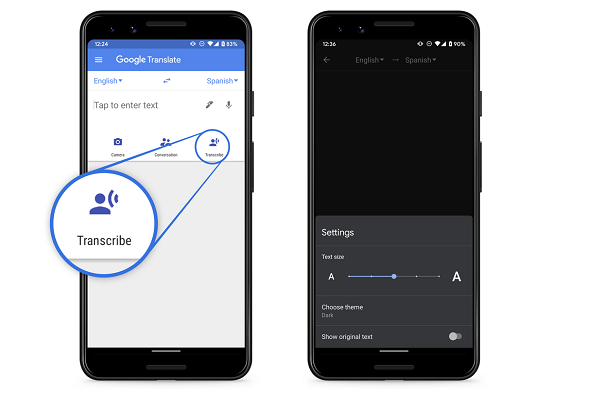Google Translate Adds Real-Time Transcription Feature
 Google has released a new transcription feature that will perform real-time translation of speech into different languages. The function is currently available only on the Android version of the Google Translate app, but the company is planning to expand it to other platforms.
Google has released a new transcription feature that will perform real-time translation of speech into different languages. The function is currently available only on the Android version of the Google Translate app, but the company is planning to expand it to other platforms.
Live Translation
The transcription feature works much like the text version of Google Translate, but with voice. The transcribe button on the Translate app lets the user pick an initial and final language, and audio is then transcribed and translated as spoken. Google first demonstrated the transcription option at CES in January. Not all of Google Translate’s languages are available yet. For now, the app can translate among English, French, German, Hindi, Portuguese, Russian, Spanish, and Thai. Any live speech or pre-recorded audio can be the source of the translation.
Audio files can’t be directly uploaded at the moment, however. The feature also requires a connection to the internet to function and it’s not sensitive enough to distinguish well between multiple voices, so Google recommends using it in quieter environments. There’s also the fact that while Google Translate is continuing to improve, especially among the more popular languages, it’s not a flawless system and will almost definitely have some errors through a mixture of mistakes in the transcription and in the translation. As a free live translation tool, it’s still likely to see plenty of use.
Google Adds Voices
The new Google Translate feature goes well with some of the other augmentations Google has been rolling out for its services. Real-time transcription and translation is another aspect of the instant translation feature that Google Assistant brought to Android devices in December. The translation of text from audio also matches with the Read It feature that Google Assistant brought out at the beginning of March, enabling the voice assistant to read articles and other text directly from a website out loud. Read It encompasses more language options as well, and can translate the text into 42 languages to read to the user.
Transcribing and translating also fits with how Google is trying to make its voice services more cosmopolitan in general, with accent variations and new international voices to go with the growing list of languages it speaks. Google Maps even added an option to translate and speak the name of a place and its address in the local language. Instant-translation is also a major selling point of the delayed Google Pixel Buds earbuds. Transcribing while translating is better for other interactions besides conversation, though. A speech or anecdote needs more than a momentary explanation and a screen with the whole audio laid out in text in the viewer’s language will likely appeal to plenty of people who want to understand what they are hearing as it happens.
Follow @voicebotai Follow @erichschwartz
New Google Assistant Feature Reads and Translates Websites Out Loud on Android Devices
Google Assistant Extends Instant Interpreter Mode to Android and iOS Smartphones
Google Pixel Buds Take on AirPods and Echo Buds Despite Premium Price and Delayed Shipping








